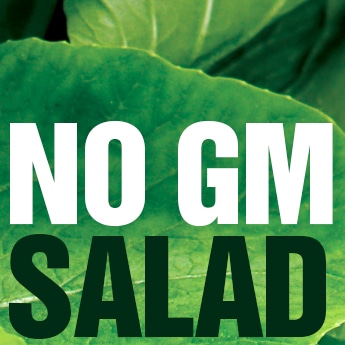by Lucy Sharratt, Power & Influence magazine, The Hill Times, July 2016
After twenty years, the use of genetically engineering (more popularly called genetic modification or GM) in food and farming is still being fought over in Canada and around the world, and is still in need of assessment.
Unfortunately, lack of transparency is a defining feature of the GM project in Canada. There is an almost total lack of transparency in regulation, no public consultation, and no labelling in the marketplace. While this accounts for much of the persistent consumer mistrust of GM foods, there is far more to GM’s uncertain future than consumer perceptions.
Many of the promised benefits of GM crops have not materialized. Farmers are spraying more chemical herbicides and there’s no evidence that crop yield increases are due to GM traits. In fact, crop yields of corn and canola in Europe, where GM crops are not grown (with small exceptions), are equal or higher to those in North America.
The federal government does not actually assess the benefits of GM crops but leaves this question to be decided in the marketplace – a marketplace dominated by six multinational corporations (that, due to recent merger negotiations, may soon shrink to three). In 2014, these six companies controlled 63% of the global seed market, and 75% of the pesticide market. It is not entirely surprising then that seed prices are steadily rising (ahead of other farm inputs), and that GM seed prices are significantly higher than non-GM counterparts. At the same time, the number of non-GM varieties on the market has greatly decreased.
The government does not track how many acres of GM seeds and traits are planted or where, hampering a full study of their economic and environmental impacts. After twenty years, there are observable and increasingly obvious impacts, but few government mechanisms to document and evaluate them.
We do know that herbicide sales have gone up by 130% in Canada over the lifetime of GM crops. In particular, the widespread cultivation of GM glyphosate-tolerant crops has led to increased use of glyphosate-based herbicides, which has led to the spread of glyphosate-resistant weeds. These troublesome weeds are now reversing another main promise: to simplify weed management. In response, companies have developed new GM crops that are tolerant to older pesticides such as 2,4-D and dicamba. In fact, Canada was the first country to approve such GM crops, stacked to tolerate multiple herbicides. Far from solving the problem, these new crops perpetuate the costly cycle of herbicide use and resistant weeds. The true impacts of GM crops on herbicide use, and the associated economic, health and environmental costs, have yet to be assessed.
In the end, not all GM crops are created equal. Some present unique environmental and economic risks, risks that farmers could identify if they were consulted. The first GM perennial crop plant, GM alfalfa, was registered in Canada in 2013 despite farmer concerns over serious contamination risks and consequent costs. Similarly, the first GM apple was approved last year over the objections of the BC Fruit Growers Association.
Meanwhile, in the midst of persistent consumer mistrust of, and even opposition to, GM foods, we hear that GM crops are needed to “feed the world.” The appeal of a technological fix is compelling, but the fix itself is elusive. Even the expensive and much-lauded Vitamin A “Golden Rice” remains unproven and unapproved. Ultimately, people are generally hungry not because of insufficient agricultural production, but because they do not have money to buy food, or access to the land, water, financing and infrastructure needed to grow and store it. In fact, we already produce enough food for the global population, and waste a third of it.
After two decades, it’s time for the government to assess the benefits, risks and impacts of GM crops. It’s time to track GM crops in the field, and label GM foods in the store. Once Canada’s experience is documented and understood, then we can begin to debate the role of GM in food and farming, in our country and around the world.





